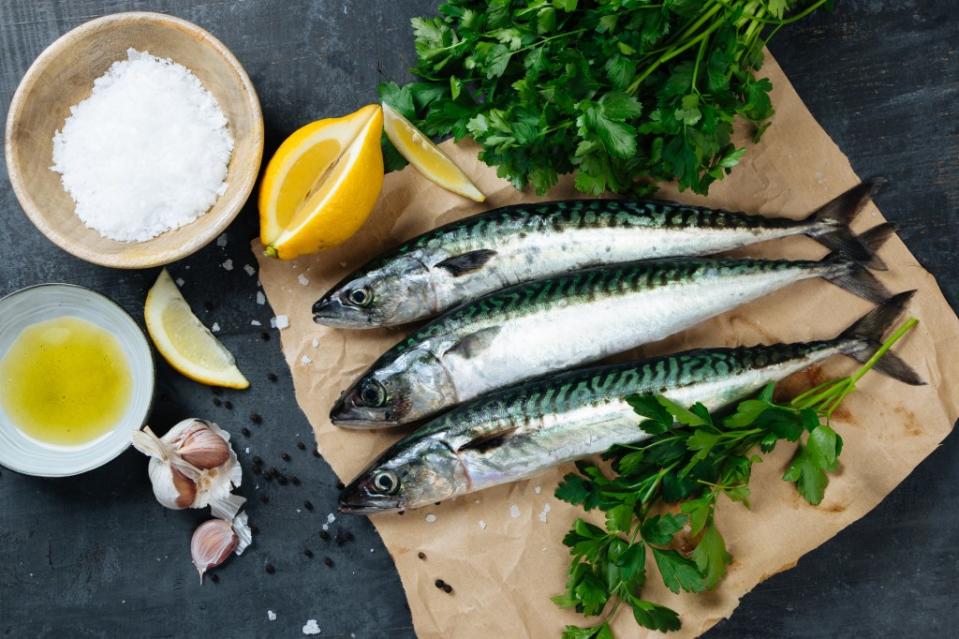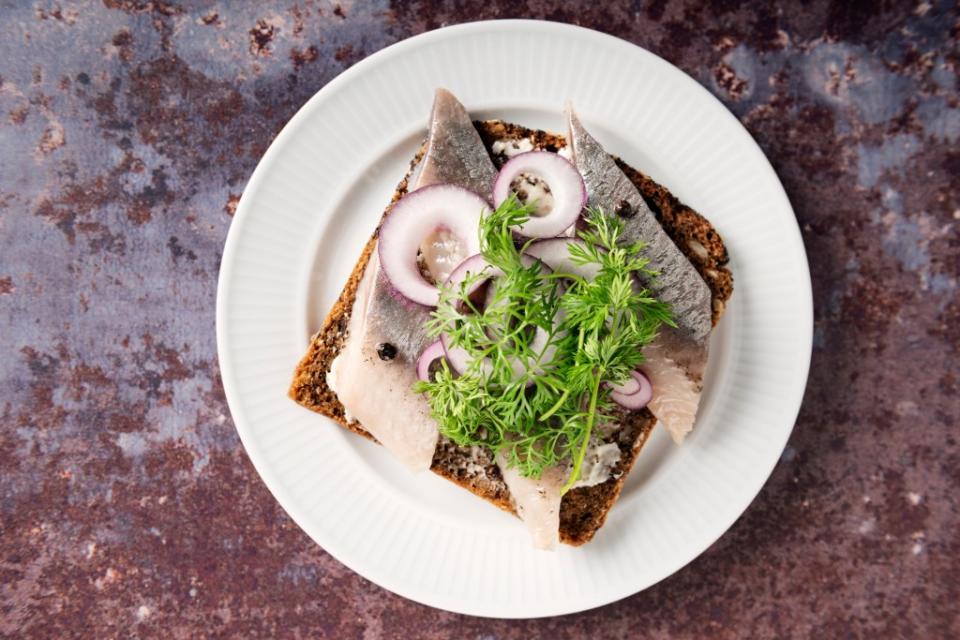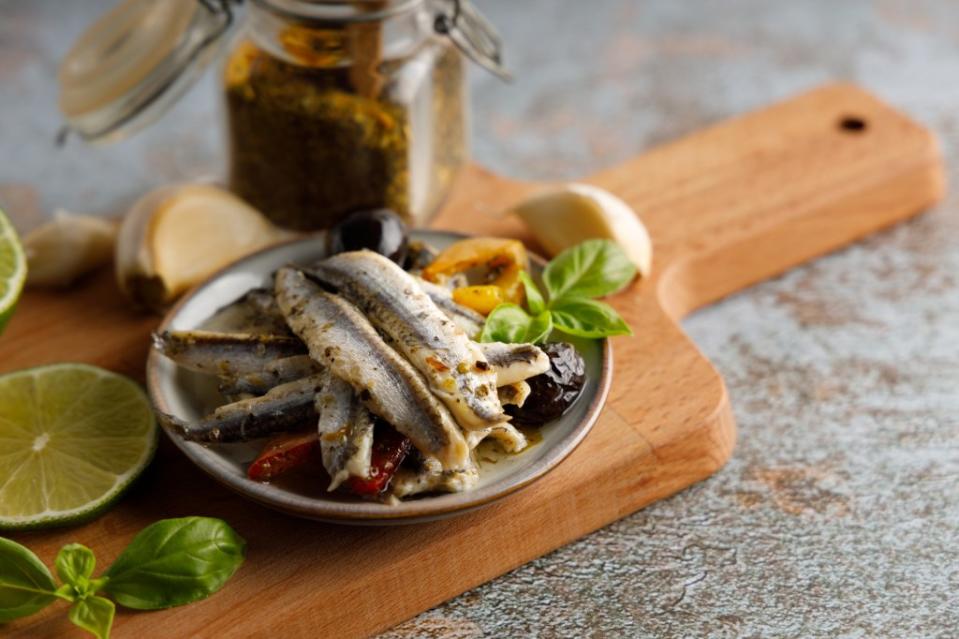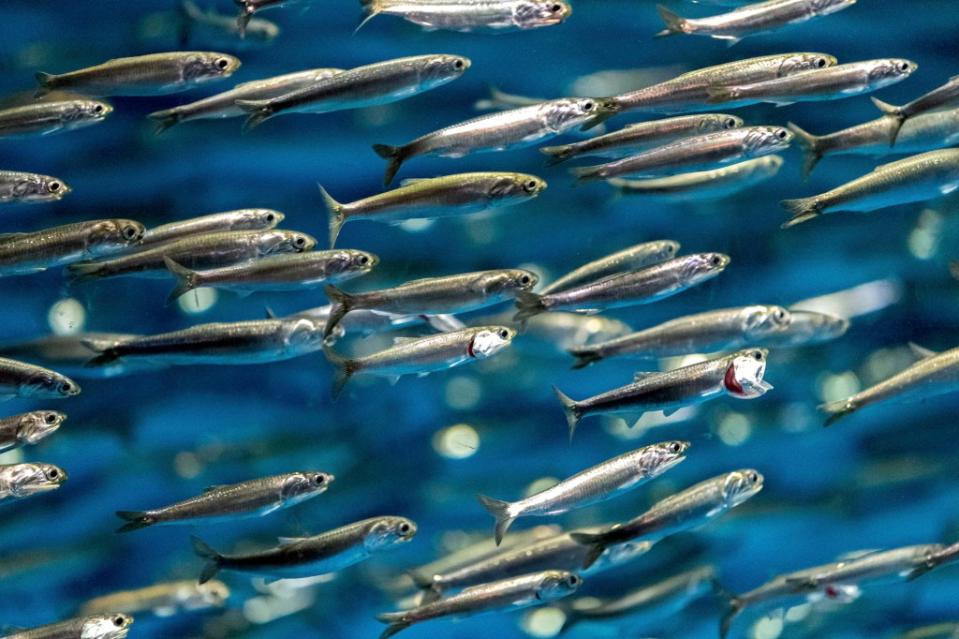Is a salmon’s diet right for you? Study suggests humans eat more of what they eat

Forget eating salmon, eat like a salmon.
To get essential nutrients, a new study suggests that people should be eating as if they were salmon.
The study, published in the journal Nature Food, found that consuming the sort of wild fish on which salmon prey, such as mackerel, herring and anchovies, could be healthier than salmon itself.

“Making a few small changes to our diet around the type of fish that we eat can go a long way to changing some of these deficiencies and increasing the health of both our population and planet,” lead author, Dr. David Willer, Zoology Department, University of Cambridge, said in a statement.
Research shows that there’s an overall loss of essential dietary nutrients in the production of farmed salmon, so eating the individual fish that are fed to salmon is a healthier alternative.
“Whilst still enjoying eating salmon and supporting sustainable growth in the sector, people should consider eating a greater and wider variety of wild fish species like sardines, mackerel and anchovies, to get more essential nutrients straight to their plate,” Willer advised.
Directly eating more wild “feed” species could ultimately benefit our health while also reducing the demand for finite marine resources.
Scientists analyzed the flow of nutrients from the edible species of the wild feed fish compared to the farmed salmon they were fed to, focusing on nine nutrients that are concentrated in seafood and essential to human diets — iodine, calcium, iron, vitamin B12, vitamin A, omega-3, vitamin D, zinc and selenium.

The wild fish that were studied included Pacific and Peruvian anchoveta, and Atlantic herring, mackerel, sprat and blue whiting – all of which are marketed and consumed as seafood.
These six wild fish contained a greater — or similar — concentration of nutrients as farmed salmon fillets.
Most wild-feed fish met dietary nutrient recommendations at smaller portion sizes than the farmed Atlantic Salmon — including omega-3 fatty acids which are known to reduce the risk of cardiovascular disease and stroke.

Compared to the salmon fillets, quantities of calcium were over five times higher in wild-feed fish fillets, iodine was four times higher, and iron, omega-3, vitamin B12, and vitamin A were all over 1.5 times higher.
“It was interesting to see that we’re effectively wasting around 80% of the calcium and iodine from the feed fish – especially when we consider that women and teenage girls are often not getting enough of these nutrients,” Dr. Richard Newton of the Institute of Aquaculture, University of Stirling, said.
“What we’re seeing is that most species of wild fish used as feed have a similar or greater density and range of micronutrients than farmed salmon fillets,” Willer added.

However, despite the clear health benefits, the scientists noted that 24% of adults eat salmon weekly, but only 5.4% eat mackerel, 1% eat anchovies and 0.4% eat herring.
“Farmed salmon is an excellent source of nutrition, and is one of the best converters of feed of any farmed animal, but for the industry to grow it needs to become better at retaining key nutrients that it is fed,” Newton explained. “This can be done through more strategic use of feed ingredients, including from fishery by-products and sustainably sourced, industrial-grade fish such as sand eels.”
The researchers hope the study’s findings will push the fishing and aquaculture industries to become more efficient and reduce the burden on fish stocks that also provide seafood.
“We’d like to see the industry expand but not at a cost to our oceans,” Willer said.
“We’d also like to see a greater variety of affordable, convenient and appealing products made of wild ‘feed’ fish and fish and salmon by-products for direct human consumption.”

